#german fairytales
Text
Do you know about Ludwig Bechstein? Well you should.
But do not worry: if you never heard of his name until now, it is perfectly normal. In a similar way to madame d'Aulnoy in France, Ludwig Bechstein was one of the great names and influential sources of the fairytale in Germany, but fell into complete obscurity due to being overshadowed in modern days by a contemporary (Charles Perrault for madame d'Aulnoy, the brothers Grimm for Bechstein).
Ludwig Bechstein was, just like the brothers Grimm, a German collector of fairytales (Märchen in German), and just like them he published an anthology of them. However, whereas the brothers Grimm started publishing their work in the early 1810s with re-editions later on, Bechstein published the first volume of his collection in 1845, and the second volume in 1856.
And here's the thing: Bechstein was MUCH, MUCH more well-known in Germany than the brothers Grimm, for the rest of the 19th century. While yes the brothers Grimm were a big success and a huge best-seller, Bechstein's fairytales were even more so. In fact his fairytales were THE de facto German fairytales of the 19th century - until the brothers Grimm's international celebrity (because their fairytales had crossed the Germanic frontiers into English and French-speaking countries, while Bechstein's had not) came back and made their own fairytales overshadow, and then completely eclipse/bury Bechstein's own fairytales.
Why is this important? Because Bechstein had in his collection several fairytales that overlapped with those of the Grimm: for example, as I will show above, both collections had an "Hansel and Gretel", and " Little Red Riding Hood". But while we know today the Grimm's version better, it was the Bechstein's version that the 19th century children knew about. And there is one big difference between the two sets of tales: while the brothers Grimm were obsessed with an "accuracy" of the stories (or what they believed was an "accuracy"), stitching stories together or writing them so as to create what felt like a traditional oral story as it would be told to you by a random German person, Bechstein allowed himself a more "literary approach". He never reached the level of an Andersen or a d'Aulnoy that would entirely rewrite a folk-tale into a long poetic epic... But he allowed himself to correct inaccuracies in the stories he collected, and to add personal details to make the story fit his tastes better, and to develop the dialogues into more than just nonsensical little rhymes, so while he kept short and simple stories like the Grimms, they definitively were more literary stories.
To give you two good examples of the differences, here are Bechstein's changes to the two stories I described above.
The main change within Little Red Riding Hood is Bechstein making the girl more intelligent and well-meaning than in the Grimms version, and the Wolf's deception even more devious. When the wolf tells the girl she could go pick up flowers and play outside of the path, like in the Grimm's tale, Bechstein's Riding Hood stops and asks roughly (not a quote I recap here): "Hey, mister Wolf, since you know so much about herbs and plants within this forest - do you know about any medicinal plant around, because if there is an herb that could heal my sick grandma, it would be super cool!". And the wolf jumps on the occassion, pretending he is a doctor - and he lists to her a whole set of flowers and herbs and berries she can pick up that would heal her grandmother... except all the plants he describes to her are poison, and the Wolf just mocks his intended victim. The joke also relies on the fact that all the plants he lists are named after wolves, with the beast convincing the girl it is because wolves are good and great things. (There's the wolf's-foot, the wolf's milk, the wolf's berries, the wolfswort - names which do correspond to real-like plants such as the spurge laurel or the aconit).
The ending is also slightly modified. The hunter is attracted to the grandma's house by hearing the unusually loud snoring of the wolf - he thinks something is wrong with the grand-mother, maybe she is dying, only to find the wolf in her place. He immediately grabs his rifle to kill it but then pause wondering "Hey, the little grandma is nowhere to be seen... and she was a scrawny woman... Better check if he did not eat her". And so he opens the wolf's belly (and the wolf is still asleep during all that, he really is a deep sleeper). When the humans decide to put stones in the wolf's belly, they explicitely reference in-universe the "Wolf and the seven goats" story, which gives them the idea. (Quite a fun and accurate detail since we know that the brothers Grimm attached the episode of the stone to the Little Red Riding Hood story by taking it from the "Wolf and the seven goats" one)
As for Hansel and Gretel, the witch is described differently from the Grimms (she is still a very, very old woman who has something wrong with her eyes, but she isn't red-eyed like the Grimm, rather she has "grass-green" rheumy eyes, and she has no cane or crutches, Bechstein rather insisting on her being a hunchback and havin a very, very large nose.) But the main difference occurs in the climax, which is very different from the Grimm.
The witch still tries to push Gretel in the oven, but she doesn't ask the girl to check if it is "hot enough". Rather she put bread in it to go with her Hansel-roast, and she asks the girl to check if the bread is brown yet. And Gretel is about to obey... when the snow-white bird that led them to the house reappears and warns her of an upcoming danger with human words. The girl immediately guesses the trick, and pushes the witch in the oven. Second big change: the "treasures" the children obtain are not the witch's, nor do they find it on their own. As they exit the house, the treasure literaly rains on them - because all the birds of the forest arrived and dropped the precious items on them while singing "For the crumbs of bread / Pearls an gems instead". As the children understand, the birds were grateful for what they believe was food offered to them (the bread crumbs) and reward the children with the treasure.
Oh yes and the mother (no stepmother here) doesn't die. Rather she and her husband are miserable in their house because they regret leaving their kids, so they are very happy when they return, and with the treasure they all are certain to never go hungry again. Happy end. (Because here the mother isn't a bad person like in the Grimm - she just really, REALLY was a desperate woman who didn't want to see her own children die before her eyes)
#little red riding hood#hansel and gretel#german fairytales#ludwig bechstein#bechstein fairytales#brothers grimm#grimm fairytales#grimm fairy tales#german fairy tales
30 notes
·
View notes
Text

#german#germany#german fairytales#german stuff#german stories#fairytale#fairytales#fairytale ending#happy ending#this is my fairytale#im on fire#girl on fire#yelling cats#cats yelling#cats can talk#cats cats cats#this is stressful#this wasn't supposed to happen#i'm on fire#this wasn't the plan#fairy tales#fairy tale#fairy tale art#fairy tale aesthetic#fairy tale ending#german fairy tale
7K notes
·
View notes
Text
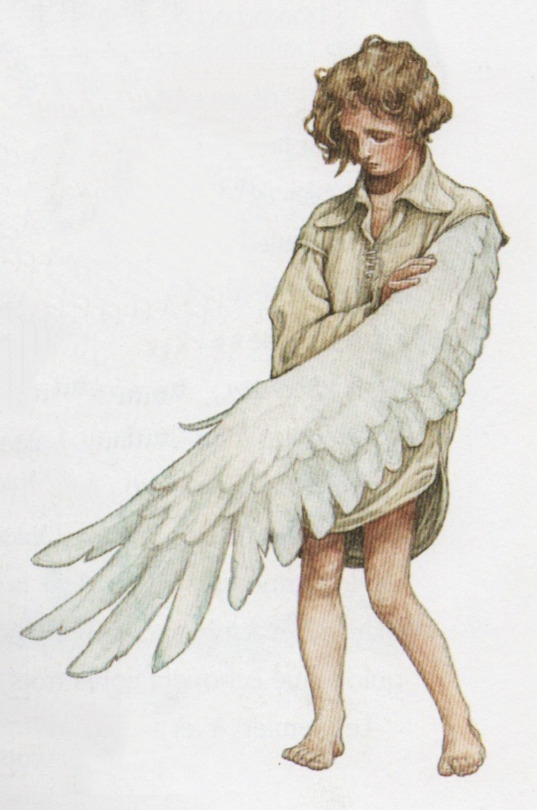
The Six Swans
Artist : Patrick James Lynch
#the six swans#les six cygnes#children's literature#fairy tale#children's books#fairy story#children's book#fairy tales#fairy#p. j. lynch#patrick james lynch#brothers grimm#the brothers grimm#les frères grimm#die sechs schwäne#german fairytales#german fairy tale#prince#wing#1993
866 notes
·
View notes
Text
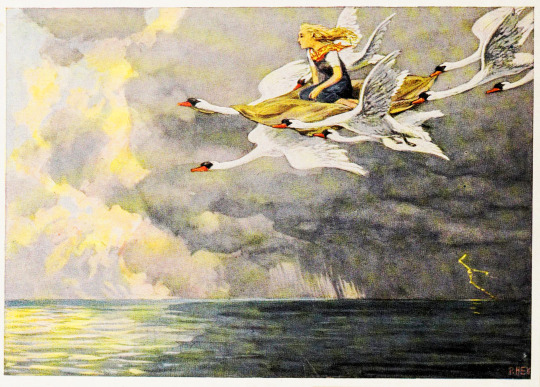
Paul Hey (1867-1952), 'Die Wilden Schwäne' (The Wild Swans), ''Deutsche Märchen'' (German Fairytales), 1939
Source
#Paul hey#german artists#Deutsche Märchen#german fairytales#fairy tales#vintage illustration#vintage art#the wild swans#hans christian andersen
182 notes
·
View notes
Text
Disney leaving out the backstory for Rapunzels name is so funny to me, because in the fairytale it makes sense but in the movie she's just named after a salad.
For no reason other than mother gothel/ the king & queen are horrible at naming babies
#fairy tales#brothers grimm#Gebrüder Grimm#Die Märchen der Gebrüder Grimm#rapunzel#tangled#german fairytales#Funny
167 notes
·
View notes
Text

Just some art of the new niigo Rin costume, referencing a german fairytale about the benefits of paying workers.
wips under cut

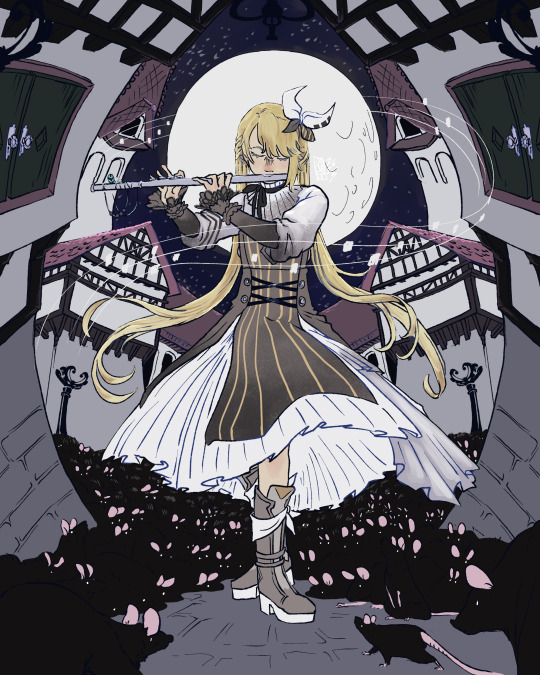

also thanks @spaceacecasey for sending me the screenshots :3
#yes I saw that rin card and immediately thought about the ratcatcher#I'm german I grew up with the struwwelpeter the dark fairytales are inside my blood#...but I must admit that the implications are a bit dubious if we consider the ratcatcher kidnapping kids....but hey I'm the monster guy#...also this might be my first prsk drawing with no (at least visible) nonhuman aspects...hurray#art#my art#fanart#digitalart#rattenfänger#german fairytales#prsk#project sekai#kagamine rin#niigo rin#niigo#nightcord at 25:00#25 ji nightcord de#hatsune miku colorful stage#prsk fa#prsk fantasy au#WAIT Y'ALL CALL HIM THE PIED PIPER?#pied piper
74 notes
·
View notes
Text

"So she doesn't get the guy and also dies in the end?" Newt wasn't quite sure what to take from that. "Shouldn't fairy tales always contain some kind of lesson? Somehow, this just seems cruel to me."
"The world is cruel," Thomas said with a shrug. "Oh, but I forgot about the part where she's not actually dead, but gets turned into an air spirit or something and also gets the chance to do good deeds and acquire the eternal happiness of men blah blah."
“The eternal happiness of men?” Newt frowned.
“A soul,” Thomas clarified, “she gets a soul.”
"Why'd you withhold that part of all?" Newt wanted to know. “Don’t ya want her to have a happy ending?”
"Is it a happy ending though?" As his eyes found Newt's, Tommy raised an eyebrow in question. "All I see is religious drivel about humans having immortal souls ascending to heaven - and why would a mermaid even care about some human-made god's heaven? To eke out an eternal existence, knowing that the one she loves has chosen someone else? That sounds more like a punishment to me than happily ever after."
"Yeah, 's bloody tragic," Newt agreed. He dug his toes into the sand, his damp clothes clinging to his body, and he could no longer hide the chattering of his teeth.
Thomas noticed and got up. "Come on, let's grab our shoes and go inside." He offered him his hand and Newt gratefully took it, letting himself be pulled to his feet.
They walked side by side in silence for a while, and then Thomas said, "Can you imagine loving someone so much that you’d rather kill yourself than bring harm to that person?"
Newt stole a sideways glance at Tommy and found the boy already looking at him. He quickly turned away again before he said, "I don't know, I haven't been in a situation like that before."
from You & I (Ever & After) on ao3.
Thomas, Prince of Denmark, is undercover at a boarding school in the far south-east of Wales. Nobody knows about his origins, except his best friend Newt. When Thomas inexplicably falls into a comatose sleep on the night of his eighteenth birthday, it is up to Newt to break a long-forgotten spell.
#tmr#tmr newtmas#tmr newt#tmr thomas#fairytale au#the maze runner#newtmas edit#newtmas fic#ao3#fanfiction#german fairytales#tmrss23
16 notes
·
View notes
Text
Cinderella 🕊️
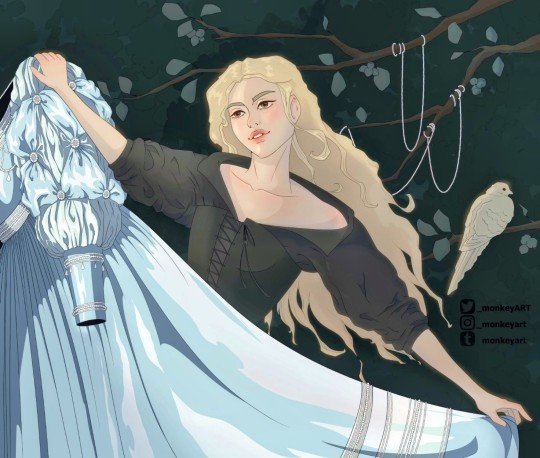
In the german version of Cinderella, there is no fairy godmother instead she gets her dress from a hazel tree, that she planted on her dead mother's grave. Doves are involved. And she gets two dresses. The first in silver the second in gold.
It also involves the stepsisters cutting their heels and toes off to fit into the shoe that isn't even glas in this one, and at the end they have their eyes pecked out by the aforementioned doves. And yes, this was read to me as a good night story when I was a child :)
This is actually version 2.1 of this drawing. Version 1 is about 1½ years old and I don't know what I did to the file of Version 2.0 but it's crunchy (2.1 is also already 6 months old but I forgot to post it 😑)
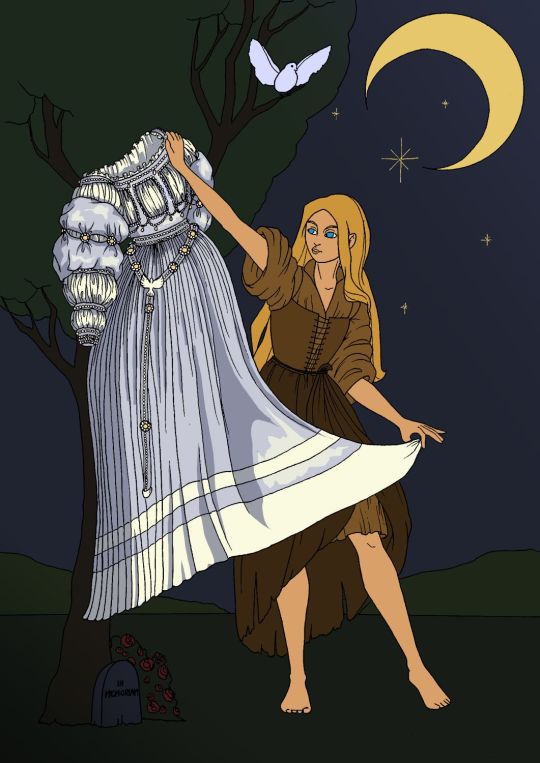

#art#digital art#illustration#my art <3#fairy tail#cinderella#german fairytales#artists on tumblr#redraw
21 notes
·
View notes
Text
Sometimes selfcare is rereading Krabat by Otfried Preußler on a hot summer day
#i just want some stickiness in my life#some dark deep horror#childhood classics#german fairytales#krabat
24 notes
·
View notes
Text
Fairytales
I kind of noticed a big misunderstanding of German fairytales.
There are two kinds of fairytales.
The folk fairytale:
This are your classic fairytales, born from a thousand years of oral history. Most of the Brother Grimm's fairytales are folk fairytales. Folk fairytales end well for the Heros and terrible for the villains (example: snow white- the evil queen is forced to dance in hot iron shoes till she dies, in snow whites Wedding)
It plays in an unknown land and in an unknown time. (starting phrase of fairytales in German : For langer, langer Zeit, in einem weiteren entfernten Land [A long, long time ago, in a far away land]) and features stereotypical characters like 'big bad wolf' and 'beatiful princess'.
It often uses magical numbers like...
7 (seven dwarves behind seven mountains, 7 ravens, seven flys killed' at once, seven Kids(?)/ little goats)
3 (three taskes, three ways to kill Snow White, three Balls in 'Aschenputtel' (German Cinderella))(examples for this are a little hard to explain in few words because they're so specific)
13 (thirteen fairies in sleeping beauty)
These stories are often uses to explain morals or rules of survival. (Don't abuse your Kids/ step Kids, don't just Run into the woods, don't let strangers into the House)
The Art fairytale:
This fairytales was written by an author and is Not meant to explain a rule or bring hope.
Most of these are very tragic. The little Mermaid (from Hans Christian Andersen) would be a good example.
Others would be 'The Steadfast Tin Soldier'(also from Hans Christian Andersen) or the 'girl with the matches' (ALSO from Hans Christian Andersen)(goodnes he wrote a lot of these, this poor man's mental health really was bad)(Spoiler: the solider and the girl die)
Hans Christian Andersen wrote 156 Art fairytales. Remember: they all endet badly! I think the guy set in Stone what an Art fairytales is?!? I did Not know that? I Just wanted to teach about fairytales, I did NOT want to learn about this man's tragic live.
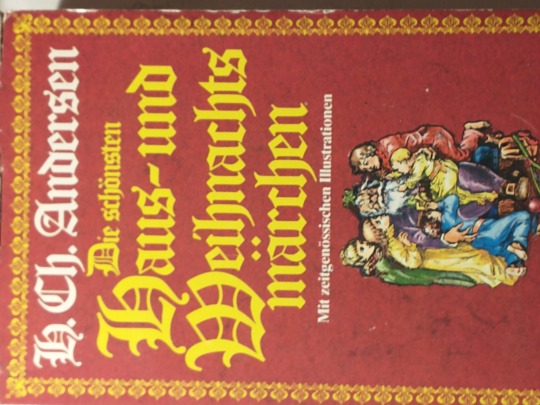
Like this are two books, full of fairytales (mostly Art fairytales) from the guy.

TWO books.
And the title reads ' Die schönsten Haus- und Weihnachtsmärchen' (The Most beautiful home and Christmas fairytales)
Beautiful fairytales my ass. The guy kust did therapy but as written stories. I mean, he wrote Snow Queen, which kind of ends well? But that doesn't really make it better.
So before I end this, to mull over Hans mental health:
Fairytales are not the only type of German folk Story. They are a very specific Type, that follows specific rules. Other types follows other rules.
Not every German folk Story ist a fairytale. And other very old Stories can end badly, but then it's not a fairytale. Not a folk one at least. But maybe it's danish and actually from this depressed Gay Poet that seems to have written all the Art fairytales of my childhood. Further more, there are many folk fairytales that do not come from Germany, but those also follow These rules more or less. (There are also a lot of different versions of the same fairytale all over Europe)
#Fairytales#Hans Christian Andersen#the little mermaid#snow queen#snow white#sleeping beauty#dornröschen#schneewittchen#Gebrüder Grimm#brothers grimm#The Steadfast Tin Soldier#The girl with the matches#Der standhafte Zinnsoldat#Das Mädchen mit den Schwefelhölzern#Die kleine Meerjungfrau#german fairytales#danish fairytales#send Help for this depressed#gay poet#Trying to explain fairytales while Not getting depressed because history#Die Märchen der Gebrüder Grimm
5 notes
·
View notes
Text
Why was Hansel the meal of the witch?
This is a question I was aked recently, and I thought it would make a good subject for a post. "Why did the witch only try to fatten up and eat Hansel? Why didn't she imprison and fattened up Gretel too? Why did she choose to make Gretel her slave instead of Hansel?"
Which is actually a fascinating question. Now, I do not promise that there is some grand truth or secret meaning behind this. It is just a little detail and some technical workings of fairytales. But it is a point that many authors and rewriters have taken an interest upon, and that if a true well of reinterpretations.
So let's go... Why was Hansel the meal, and Gretel the slave?
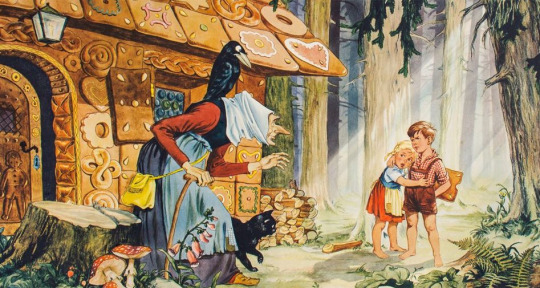
If we go by the "canon" of the text (of course "canonical" fairytales do not exist, this is just an expression) - if we go by the Brothers Grimm's text, we... well we do not know. It is not specified anywhere why the witch decides to lock up and fatten up Hansel out of the siblings, and to not do the same thing for Gretel. There is no reason explicitely spelled out or given. Maybe she simply prefers the meat of boys over the one of girls? This absence of justification, and the apparent "randomness" of the choice opens a door for authors who would like to change things: for example in "A Tale Dark and Grimm" (the book, not the Netflix series), it is both Hansel and Gretel that are fattened up by the witch, and she only picks Hansel as the first one to be roasted. The Looney Tunes Hansel and Gretel also were both in the cooking pot of the witch Hazel...
The text only leaves implications for the reader. For example, the need for the witch to have a slave/assistant to help her with the chores is implied by the facts that she is 1) elderly 2) has a very bad sight and 3) walks with crutches (a very important point). So it is understandable she would require a slave to help her - but then why pick Gretel, and not Hansel? Again, the text does not answer. Many people like to portray Hansel as the oldest child of the duo, and Gretel as a younger sister - this is because Hansel seems to be the strongest, bravest and most intelligent one, as well as with how his name always comes first in the text, Gretel being after him. Maybe the witch chose to eat him first because he was precisely older, and thus there was a more developed body to eat? Even if the siblings are of the same age, we can always imagine the very old and present male/female dichotomy that claims that men's body are naturaly stronger, larger and meatier than women's, who have graceful, slender, lighter bodies. Maybe such a concept is at work, putting forward a mindset where a cannibal witch will always go for boys first as a main course, and girls next as an appetizer...
One possible reading of the story is that the witch only had enough place to lock up ONE child and thus had to make a choice. Maybe there wasn't enough room for two kids in her prison for future meals? This interpretation is supported by the ORIGINAL text of the Grimm's fairytale. In the first edition of the brothers Grimm's fairytales (provided by Jack Zipes), there is an explicit mention of the place Hansel is locked in: it isn't some sort of stable or cage as it would later be described, oh no! It is a chicken coop so small Hansel can BARELY MOVE. It is a really tiny prison, in which he barely fits. Of course, on a practical side, it can help with the whole fattening process since having a child eat rich meals without ever moving is certain to make him plump in no time (just look at these horrible industrial farms and how they lock up animals in tiny cages) ; but this detail actually explained why the witch only placed her efforts on one child, and not two: she obviously had only enough to place to lock up one kid, and had to deal with the other in a different way.
But even if we admit all those implications - that the elderly, handicaped witch needed a help, that she had only enough room to lock up one child, that maybe Hansel as an older boy makes a better meal than Gretel - there are still some strange and bizarre logical holes. For example, the witch beats up and starves and exhausts Gretel. This is the complete opposite of what she does to Hansel, who is pampered and fattened up - does this imply the witch maybe does NOT want to eat Gretel? Or does she really have only enough resources to fatten up one child, and can only afford making Gretel more edible once she is done with Hansel?
Again, mysteries upon mysteries. Fairytales are not created to work on practical details or actual psychological processes - they are stories relying on powerful visuals and ancient motifs and a dream-logic-structure. When we are told that the witch locks up Hansel to fatten him up and eat him, and that Gretel is becoming an abused slave, we just accept it, because it works on a set of powerful visuals, such as the malnurished slave sister cooking and feeding her imprisoned and soon-to-be-killed brother. The idea of the sister being reduced to a tool in the process of killing her own brother is a very powerful one, never explicitly stated, but still present and sometimes used by adaptations. There was this German Hansel and Gretel movie released in 2005 that explicitly played on this: the children were never told by the witch her intentions when she locked up Hansel, and for the first week or so of Gretel being a slave and Hansel fattened up, they were left in the dark concerning the real intentions of their mysterious jailers. This was a stark contrast with many Americanized adaptations that have the witch gloating and explaining her cannibalistic desires to her victims, and which opened the door for some interesting plot points - in this movie's case, Gretel being quite jealous and envious of Hansel's new life of feasting and being kindly treated by the witch when she got all the insults and chores. Of course, when they discover the truth, their mutual feelings reverse as Hansel realizes his seemingly "easier" fate is actually the worst of the two.
Still, the text is left ambiguous and open-ended enough for us to imagine TONS of things. There could be a rewrite of the tale where the witch exclusively eats little boys, and hates little girls. One nterpretation of dark poetry of the tale can be found in Znescope's Gretel mini-series. Despite this mini-series having BIG flaws (the choice of the witch's true identity was... quite bad to be honest), it does have a very interestng and morbid answer to the "Why was Hansel the only one fattened up?" question. It chooses to depict this difference of treatment as a sick and cruel game the witch plays with her preys: Hansel and Gretel are both her prisoners, but she fattens up Hansel while she starves Gretel, to make a contrast between the two, simply out of a perverse amusement. There is one particularly striking image of the two children locked in two cages arranged like a weighing scale, with Hansel's cage going lower as he grows fatter and Gretel's going up as she becomes skeletal... It is a nice visual contrast that has been reused by various artists.
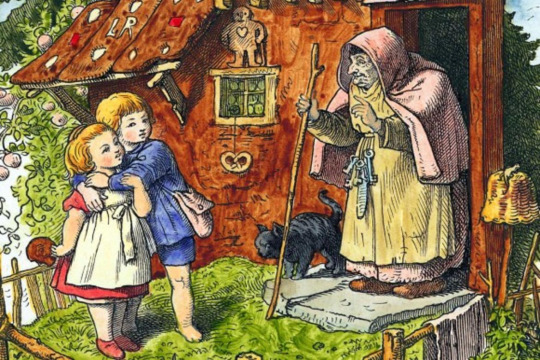
Now, I spoke mainly here of the content of the story and of the text itself. However, as I stated before, we must look beyond the story itself to understand why Hansel was to be the meal, and not Gretel. Or rather we need to look at the fairy tale's structure, on a meta-level.
As I said before, the fairy tale works here on a system of duality. Hansel and Gretel are meant to be a yin and a yang, complementary reflections. The boy and the girl, the brave and the coward, the cunning older brother and the crying little sister. The idea that their fates are "split" into the house of the witch not only furthers the anguish of the characters, who at this point were always together but now find themselves separated, unable to face together the same trials, but also keeps on playing on these visuals and motifs. As I said, there is something that many artists read in the tale, in the opposition between a malnourished Gretel and a feasting Hansel. This is part of the same duality of food and famine present all throughout the tale, such as the woodcutter's famished and poor household, opposed to the witch's house made of sweets and with chests full of pearls. The siblings represent two forms of abuse and evilness enacted by the witch, but in complementary forms: with Gretel the witch becomes a domestic abuser and an enslaver, with Hansel she becomes a jailer and an ogress.
One can also read in this an extension of the typical sexist duality between men and women in these old centuries: the fates the witch forces upon the two children can be caricatures of what each gender is supposed to "do" in such a society. Gretel, like women, is expected to do household chores and to cook for her "man" - here it is caricatured into her becoming a slave, and only helping fattening up her brother like some cattle. In return, Hansel, like a man, is supposed to be well-treated and well-fed, but here the caring wife/mother figure is a monstrous hag who only makes him feast so she could eat him later. In fact, it is quite interesting to see how both siblings are dehumanized and reduced to the status of animals - from Hansel being fattened up in the stables like some pig or chicken, to Gretel being fed leftovers like a dog.
All of that being said, there is another much needed argument that must be made: the answer fo thte question can be easily found in the story's structure. This is the most obvious solving of the problem when you consider it all: the story of Hansel and Gretel relies on the idea that the two children must save each other in turn. There is a balance in the tale, which bears the name of the two protagonists as heroes, but one before the other. During the first part of the tale, it is Hansel who takes the lead and the decisions. He is the cunning hero who tricks his parents, saves his sister from the woods, returns home thanks to his plan. Gretel is only seen being scared, and crying, and not doing anything except follow her brother around. In the second part of the tale, within the witch's house, it is Gretel who becomes the hero. Her brother is "out of the race", locked up away and unable to do anything, and it is Gretel who this time has to trick the deadly parental figure, come up with a clever ruse, and ultimately save her brother from death. This creates a perfect balance between the two characters: Hansel starts out as the hero protecting his useless sister, and then it is Gretel who vanquishes her uselessness to become the hero saving her own, impotent brother. The siblings need each other to survive, and thus save each other in turn. This is how the story works. And this is why Hansel must be the locked-up, fattened-up victim, so that his sister can save him. Else it would have been the story of "Hansel", and not "Hansel and Gretel".

All of that being said, a last point must be made about a final theory. A theory and reading of the tale that has been very prevalent and prominent in recent adaptations of the story.
The recent "Gretel and Hansel" horror movie did it. Before the (X horror movie) also did it. Neil Gaiman's Hansel and Gretel also used this idea. The comics Fables toyed with it in a side-way. And this idea is simple: the witch did not want to eat Gretel, but rather wanted to make her a witch like herself. Gretel wasn't the witch's slave, but unwilling apprentice.
This idea is born of course from a reconsideration of what a "witch" is, and the gender questions attached with the figure of the witch. In the original story, the witch is not a witch in the modern sense of the term, in fact she is a monster that is very clearly an ogress by another name. There is no question of learning how to be a witch, or making deal with dark powers, or anything like that. But when you read the tale with the modern sense of "witch", as a symbol of dark and hostile feminity, as a woman of power, who works against the domination of men, or the tyranny of patriarchy - when you consider all the gender questions surrounding real-life witches and the witch hunts, you see the witch's actions under a different eye. Her not wanting to eat Gretel at first, and making her do her chores, and forcing her to live with her, might hint at the fact she still considers her more "human" or more valuable than her brother, who is nothing but food, a mere cattle. Several of the modern reinventions of the tale, such as those stated above, decide to add the twist that the witch actually wants to shape or make the little girl into her image: from a slave doing the witch's chores, she becomes the witch apprentice, who is by her side in everything she does. Some of those readngs remove the elements of abuse towards Gretel, while others do not forget them. Neil Gaiman's take on the story is especially fascinating as the witch is explicitely described as oscillating between periods of sweetness and kidndness, promising Gretel all of her secrets and great powers, and periods of pure hatred and violence where she just insults and beats up the girl - all of it highlighting either the witch's madness, or a form of senility due to her old age.
But this theme of "Gretel as a future witch" or "Gretel as the witch's apprentice" ties in with another subtext well-hidden in the original text, but that many like to weave upon: Gretel as the "daughter" of the witch. In many of those rewrites and reinterpretations, the witch doesn't just treat Gretel as an apprentice, but as an heir or a replacement daughter. This is no surprise since it is very clear that in the original tale, the witch is the dark side of the mother figure, and an evil doppelganger of the wicked stepmother/mother of the siblings. As such, it makes sense for her to impose an abusive and unconsented motherhood upon Gretel - doesn't her forcing the girl to do all the chores not reminiscent of how famous fairytales stepmothers treat heroines like Cinderella? Such a perverse motherhood was already explicit and obvious in her treatment of Hansel: like a mother she nourishes and feeds Hansel (in fact she succeeds where the wicked stepmother failed), but this is all to devour him, in a ritual of "un-birth", she becomes a death-givers who doesn't expel a child out of her womb, but has it return to her stomach. [This is a very common and usual motif among ogres of fairytales, who are all caricatures of parenthood].
More generally, to have the witch act in such a way actually makes the fairytale more "feminist" somehow, but in a quite perverse way. Because in such a reading, we have a women-dominated world. The true active and powerful characters of the story are beings such as the wicked stepmother and the witch, who command, control and influence the other characters - especially the male ones. The father is a weak puppet who can't stand up to his wife, Hansel is reduced to a fat pig in a cage. Hansel did try to escape the tyranny of the wicked woman, but all he could do was push back his doom, and his plans ultimately failed. Gretel, as a woman herself, is given a special treatment - and in the "apprentice/daughter" interpretation, is "absorbed" by this world of wicked, dominating women. But she actually breaks from it, and kills the one that would have "turned" her - and it is telling and interesting that the only one who can have a true an full success, a definitive victory in this tale is Gretel. Hansel's plans work and save them, but only for a brief time, and his last plan fails dramaticaly, before he gets locked up and "out of the story". Gretel meanwhile, when she gets the courage and intelligence to act, proves herself much more efficient and definitive than her brother, as she puts a true end to the threat other them by killing the witch (and by extension killing the wicked stepmother/mother). This is something Hansel couldn't do - all he could was trck the wicked woman, and nullify her plans, but he could not remove the threat of the death and the hunger.
Anyway, as you can see, despite being a quite superficial and silly question, this fact (or rather absence of facts) opens up a whole jar of various interpretations, readings and themes, and proves the hidden complexity of these apparently "simple" stories.
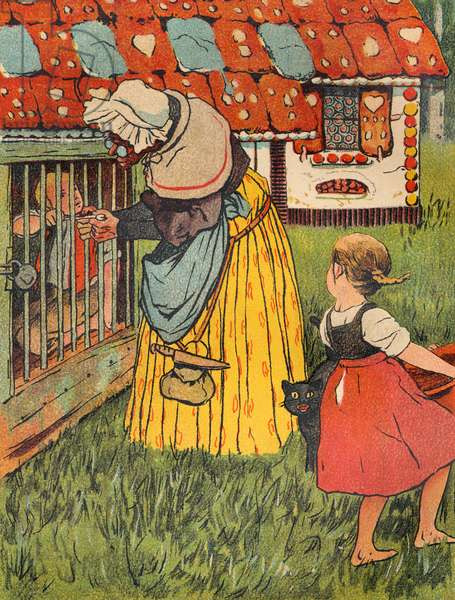
#hansel and gretel#hansel#gretel#witch#fairytale analysis#the gingerbread house witch#grimm fairytales#german fairytales#hansel and gretel adaptations
353 notes
·
View notes
Text
Anyone who's had the honor to read original German fairytales, particularly those by the Grimm brothers, knows the absolute terror those stories induced on a child, yet they had little me in a chokehold.
I had a whole book of over 300 pages that I read religiously almost every night. My mother bought it for me without ever reading it herself; we're not German and she just assumed those were regular fun little fairytales for children.
The other day, I've stumbled upon it and went through some of the stories, laughing at absolute insanity of it all. I've read some parts to my mom and she asked who the hell would read those stories to their children. I had to remind her she bought the book and that I've read all of it multiple times when I were a kid. She noted that it's nice I've enjoyed them at least.
I did enjoy them, out of morbid curiosity. You'd never know what would happen in these stories. I was really looking forward to reading Cinderella since that's the story I've already known. Interestingly, Disney never mentioned the part where the stepsisters cut parts of their feet, blood streaming down the glass shoe, or when the birds (did I mention that there's no fairy godmother, but magical birds instead) took stepsisters' eyes out as a punishment for the way they've treated Cinderella.
There were often vivid gruesome details, like the one where a woman cooks her stepson and serves him to his father, but it's okay, because in the end, the boy comes back to life through a magical tree and throws a huge rock on stepmother's head, so it's a happy story.
Not all of them had happy endings though. There's a fairytale called Mother Trudy, which is about one page long and talks about a curious little girl who wanted to meet the weird lady next door. Her parents were firmly against it and told her she won't be their daughter anymore if she goes there. Well, they were right, since Trudy straight up murders her. She throws the girl in a fire pit and the last sentence of the tale is: "Ah, it (the fire pit) glows so brightly."
I don't think there are many stories here without at least one gruesome death, and if there's no death, there's certainly some other fucked up shit.
These stories were supposed to be "lessons" for children, and, although I must admit I've never entered neighbours' homes alone as a child, I doubt it's because of good ol' Trudy.
Most of the fairytale books I see nowadays are edited to be child-friendly and filled with colorful pictures. There were no pictures here, 8-year-old me simply had to imagine the hunter from Snow White ripping a wild boar's lungs and liver out of its dead body to present it to the Evil Queen as Snow White's with nothing but my own imagination.
Perhaps these...unusual stories left long lasting effects on my brain, but my nostalgia will never let me see this book as anything short of a masterpiece that filled my childhood days with joy (and a bit of a fucked up imagination).
#fairytale#dark fairytale#brothers grimm#german fairytales#children stories#cinderella#snow white#fairy tales
11 notes
·
View notes
Text
If you ever want to scare a child read them accurate translation of Grimm fairy tales. From what I can tell the proper way to raise a German child is to give them nightmares for the rest of their lives. My dad has some old children books from when he lived in Germany as a kid and they were also messed up. These fairy tales where told before the Grimm brothers collected and published all of them so it seems like it was a tradition.
#grimm fairy tales#german fairytales#grimm brothers#the Grimm brothers weren’t authors they were anthropologist#they didn’t come up with the stories but they went around Germany and gathered them
4 notes
·
View notes
Text

Paul Hey (1867-1952), 'Rattenkönig Birlibi', ''Deutsche Märchen'' (German Fairytales), 1939
Source
#Paul Hey#german artists#Deutsche Märchen#fairy tales#the rat king#vintage illustration#vintage art#german fairytales
63 notes
·
View notes
Text
Not to be a Boomer but kids these days don’t know fucked up German fairytales and that sucks.
#fairytale#fairytales#watched secret in the wings last night people were like never heard of these#german fairytales
14 notes
·
View notes
Text



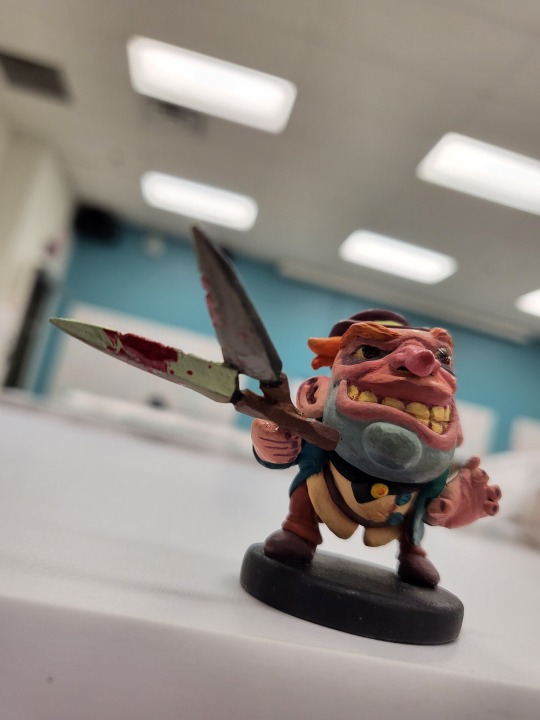

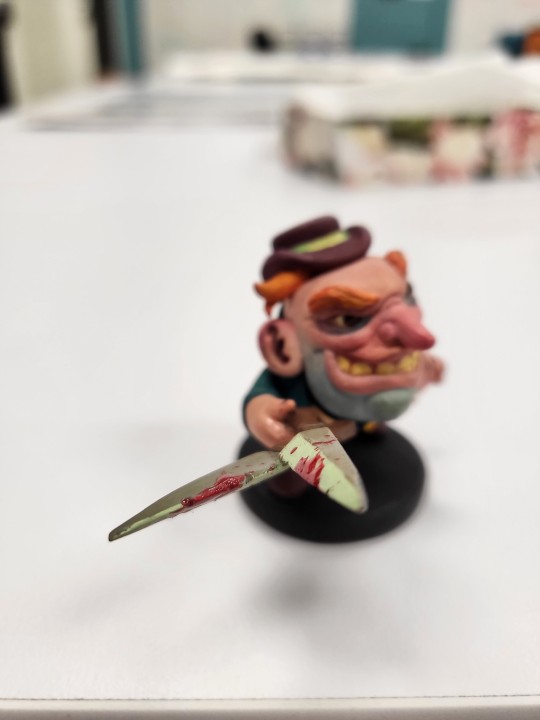

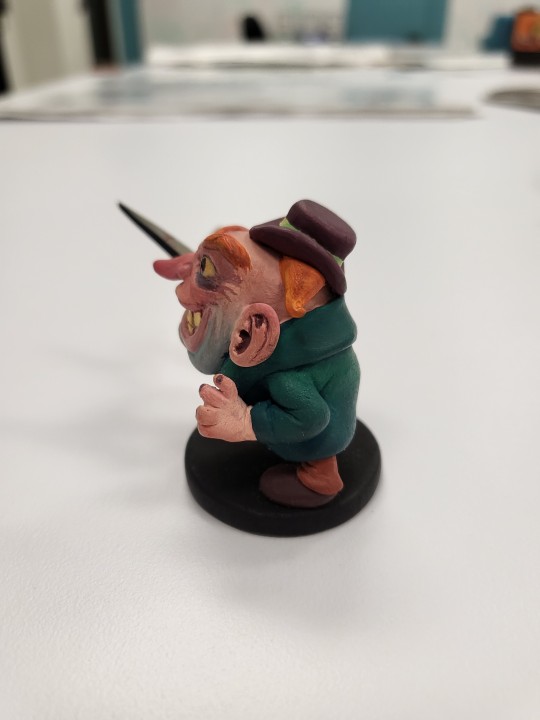
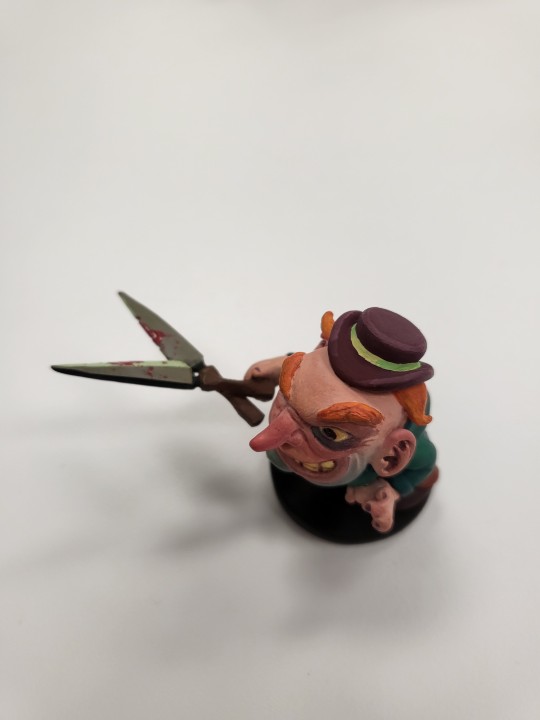

My take on the tailor from The Story of Little Suck-a-Thumb!
Heavily inspired by the Playbill cover of Sweeney Todd's original Broadway run :=3]
#little suck-a-thumb#struwwelpeter#fairy tale#fairy tale art#german fairytales#sweeney todd#mrs lovett#the demon barber of fleet street#polymer clay#sculpture#sculpey#miniature#miniature art#acrylic gouache
4 notes
·
View notes